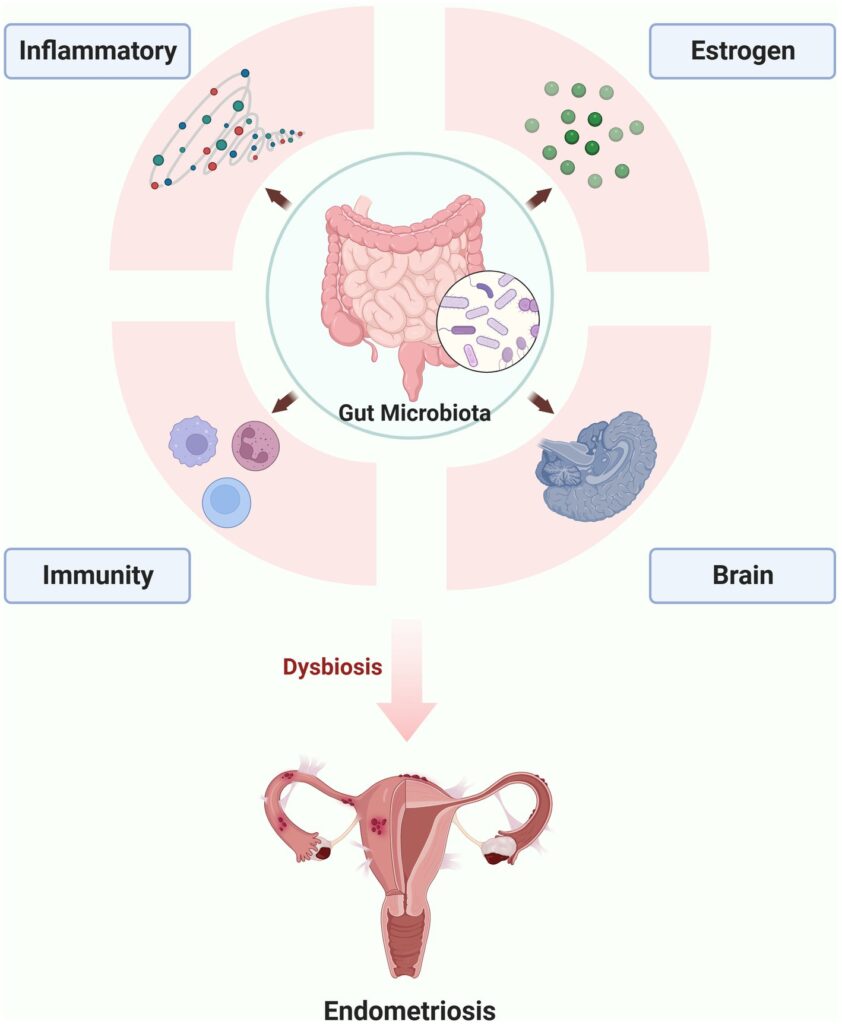Bacteroides endometritis is a uterine infection caused by anaerobic bacteria from the Bacteroides genus. This condition often arises as a secondary complication following gynecological procedures, childbirth, or pelvic inflammatory disease (PID). Understanding its etiology, pathogenesis, clinical presentation, and treatment is critical for effective management and prevention.

Etiology and Pathogenesis
What Are Bacteroides?
Bacteroides are a group of Gram-negative, anaerobic, rod-shaped bacteria that naturally reside in the human gastrointestinal and genitourinary tracts. While harmless under normal conditions, they can become opportunistic pathogens in specific circumstances, such as breaches in epithelial barriers.
Pathogenesis in Endometritis
- Introduction of Bacteria: Bacteroides species enter the uterine cavity during invasive procedures like dilation and curettage (D&C), cesarean sections, or intrauterine device (IUD) placement.
- Immune Evasion: These bacteria evade host defenses through mechanisms such as capsular polysaccharides and biofilm formation.
- Inflammatory Response: The presence of Bacteroides triggers an inflammatory cascade, leading to endometrial tissue damage and symptomatic infection.
Clinical Presentation
Symptoms
- Lower abdominal pain
- Abnormal uterine bleeding
- Foul-smelling vaginal discharge
- Fever and chills
- Dysuria or dyspareunia
Risk Factors
- Recent childbirth (especially postpartum infections)
- Pelvic surgery or instrumentation
- History of PID
- Prolonged rupture of membranes during labor
Diagnostic Approach
Laboratory Investigations
- Endometrial Culture: Identifies Bacteroides and other potential pathogens.
- Blood Tests: Elevated white blood cell (WBC) count and C-reactive protein (CRP) levels.
- Gram Staining: Detects Gram-negative rods characteristic of Bacteroides.
Imaging Studies
- Ultrasound: Identifies retained products of conception or uterine abscesses.
- MRI: Provides detailed views of soft tissue inflammation.
Differential Diagnoses
- Tubo-ovarian abscess
- Chronic endometritis
- Endometrial cancer
Treatment Modalities
Antibiotic Therapy
Effective management requires broad-spectrum antibiotics targeting anaerobic organisms:
- Metronidazole: Primary agent against anaerobes, including Bacteroides.
- Clindamycin: Alternative for patients intolerant to metronidazole.
- Combination Therapy: Often combined with beta-lactams (e.g., ampicillin) or aminoglycosides (e.g., gentamicin).
Surgical Intervention
- Drainage: Indicated for abscess formation.
- Hysterectomy: Reserved for severe or refractory cases.
Supportive Care
- Hydration and electrolyte management.
- Antipyretics for fever control.
Prevention Strategies
Procedural Precautions
- Strict aseptic techniques during gynecological procedures.
- Prophylactic antibiotics for high-risk surgeries.
Postpartum Care
- Early identification and treatment of postpartum infections.
- Monitoring for prolonged rupture of membranes.
Patient Education
- Importance of timely treatment for PID and urinary tract infections.
- Regular follow-ups after gynecological interventions.
Complications
If untreated, Bacteroides endometritis can lead to:
- Chronic pelvic pain
- Infertility
- Sepsis and multi-organ failure